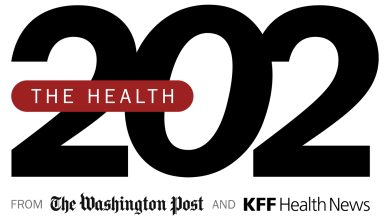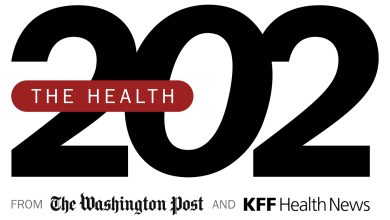What is employee benefits administration?
Providing employee benefits is essential for companies looking to attract and retain top talent and remain competitive. Before crafting your compensation package, it’s crucial to have a strategy in place for effectively managing your benefits. This is where employee benefits administration steps in to streamline the process.
Selecting employee benefits is just the beginning of the benefits administration journey. The process can be complex and time-consuming, especially when navigating state and federal compliance regulations.
Here, we will delve into the employee benefits administration process and explore how benefits administration software can streamline and enhance the management of these essential benefits.
What is employee benefits administration?
What is employee benefits administration? Employee benefits administration is the process of managing a company’s employee benefits program.
The process includes various administrative tasks, such as:
- Designing the benefit
- Establishing a budget
- Educating employees
- Analyzing results (i.e., is it helping with retention and recruitment or employee satisfaction?)
- Keeping up with compliance
- Completing required reporting
Within many companies, a dedicated employee benefits administrator is often found within the human resources department to oversee this intricate process. This individual should possess expertise in conducting research, interpreting compliance and legal guidelines, and collaborating with benefit providers to ensure a seamless benefits administration experience.
Many HR professionals opt for employee benefits administration software to streamline and simplify the process.
With many things on their plate, benefits administration software provides a way for HR professionals to carve out more time for the parts of their job they love most.
Alternatively, companies can choose to entrust benefits administration to a third-party provider, enhancing efficiency and effectiveness in managing employee benefits.
Here are a few examples of popular employee benefit options that benefits administration can help with.
- Health insurance
- Dental and vision insurance
- Vacation time/ Paid time off (PTO)
- 401(k)s and other retirement benefits
- Parental leave
- Disability insurance
- Fringe benefits
- Life insurance
- Workers’ compensation
- Student loan contributions
A robust benefits package is a powerful way to demonstrate your commitment to your employees. It not only reduces turnover and boosts employee morale but also enhances engagement. With a well-structured benefits administration process in place, you can effectively monitor the benefits you provide, assess their impact, and make necessary adjustments to ensure your employees remain satisfied and content.
How does the employee benefits administration process work?
Let’s take a closer look at the four essential steps in the employee benefits management process. This review will provide valuable insight into how the process operates and ensures a smooth administration of employee benefits.
-
Do your due diligence
Begin by conducting thorough research as the initial phase of the benefits administration process. To craft a comprehensive benefits package, it is crucial to understand the desires and preferences of your employees. This can be achieved through employee surveys to gather feedback and by analyzing the benefits offered by your industry competitors.
Your team members may prioritize standard benefits such as health insurance coverage. However, they may also appreciate less conventional options like pet insurance and tuition assistance.
An attractive benefits package should encompass a diverse array of benefit choices that set your company apart for both prospective hires and loyal employees.
-
Establish your budget
After completing your research, it’s time to establish your benefits budget. Your budget will determine the range of benefits you can provide to your employees. Whether you’re a small or large company, budgeting is key. Remember, aside from monetary benefits, consider offering non-monetary perks like flexible schedules and paid time off (PTO) to enhance your benefits package.
All benefits offered should align with your organization’s financial goals. Collaborate with financial or tax advisors to establish a budget that suits your needs. Regularly review and adjust your budget, whether on a quarterly or annual basis, to ensure optimal financial management.
If you decide to transition to a more economical benefit option, like shifting from a traditional low-deductible health insurance plan to a high-deductible health plan (HDHP), make sure to promptly inform eligible employees of this advantageous change.
-
Roll out your benefits
Once you’ve finalized your benefits package, it’s time to kick off the management process. Start by enlightening your employees about the available benefits, how they operate, and the enrollment process. Empowering your employees with this knowledge increases the likelihood that they will utilize and appreciate their benefits to the fullest. After all, understanding how to enroll in and make use of these perks is key to maximizing their value.
If eligible, ensure to inform employees about the possibility of including their spouses or dependents in the benefits package. Additionally, your onboarding procedures and company policies should outline the protocol for handling company benefits in the event of an employee’s departure.
In the case of offering a health savings account (HSA), it’s important to inform your employees that the account remains with them even if they decide to leave the company due to retirement or resignation. On the other hand, a flexible spending account (FSA) would remain under the company’s administration. We’ve all heard of the “use it or lose it” nature of FSAs. Make sure your employees understand!
Upon enrollment of your employees, it is essential to monitor the utilization of benefits, accurately process payroll, stay current with insurance providers and other service vendors, and address any inquiries or issues raised by employees. Your benefits administrator serves as the liaison between your benefits providers and employees, ensuring a seamless employee experience throughout the process.
-
Analyze your results
An integral part of the benefits administration process involves regularly assessing the utilization and satisfaction levels of your employee benefits. If a particular benefit isn’t being utilized effectively, it may be beneficial to consider removing it in the upcoming year. Additionally, conducting surveys can help gauge employee engagement and collect valuable feedback to tailor your benefits package more effectively to meet the specific needs of your workforce.
Ensuring your benefits comply with federal regulations is crucial. The Employee Benefits Security Administration (EBSA) safeguards workers by overseeing fair benefits administration and ensuring employees are aware of their rights. Given the frequent changes in government regulations, it’s essential to regularly review your benefits package to ensure ongoing compliance with EBSA requirements.
Certain benefits are contingent upon company size or state regulations. For instance, under the Affordable Care Act (ACA), organizations with a minimum of 50 full-time equivalent employees (FTEs) are mandated to offer affordable health benefits that meet the criteria of providing minimum value and minimum essential coverage (MEC) to their employees.
If your company expands to 50 employees and you fail to provide health coverage, you could face significant penalties in the following year. Thus, it’s crucial for your benefits administrator to stay vigilant in monitoring federal and state regulations to avoid any compliance issues. These issues can be costly (and a total headache). Best to avoid.
Check out our helpful post on how to calculate if you’re a Applicable Large Employer (ALE) with 50 full time equivalent employees.
What is employee benefits administration software?
Employee benefits administration software serves as a powerful asset for organizations, allowing seamless automation and management of daily tasks. This innovative software not only optimizes benefits and reduces costs but also assists in employee enrollment, monitors federal regulations, tracks benefit usage, and more—all conveniently centralized in one platform.
Utilizing a benefits software platform allows you to seamlessly connect with service providers and insurance companies, ensuring swift access to essential information. This platform also serves as a valuable tool for educating your employees on their benefits offerings, empowering them to maximize their perks. Additionally, benefits administrators can keep you informed on legal compliance issues, safeguarding you from potential costly penalties.
Certain employee benefits administration software operates on the cloud, allowing both you and your team to access and manage benefits seamlessly from any location. When selecting the ideal software solution for your company, it’s crucial to verify that it includes security protocols to safeguard your employees’ information from the risks of identity theft and hacking.
The type of software required will vary based on the benefits provided. For instance, if your offerings include a health reimbursement arrangement (HRA) or employee stipends, it’s essential to invest in software tailored to these specific benefits, such as the solutions offered by specialized vendors like Take Command.
If you’re analyzing your options, make sure to read our post on how to choose the best benefits administrator for your company.
Final thoughts
Deciding on the best approach for your HR team to handle benefits management is crucial, especially when offering a comprehensive benefits package. Avoiding potential errors that can arise from self-administration is key, so investing in efficient benefits administration technology is highly recommended. Despite initial concerns, a well-organized administration process will not only simplify operations but also empower your employees to fully comprehend and utilize their benefits.
At Take Command, we’re experts on health reimbursement arrangements. Our HRA administration platform was the first to market product when the newest HRA models were rolled out and continues to be the largest provider of these new HRAs. With our benefits administration software, you can easily offer your current employees an HRA and manage them in just minutes each month.


